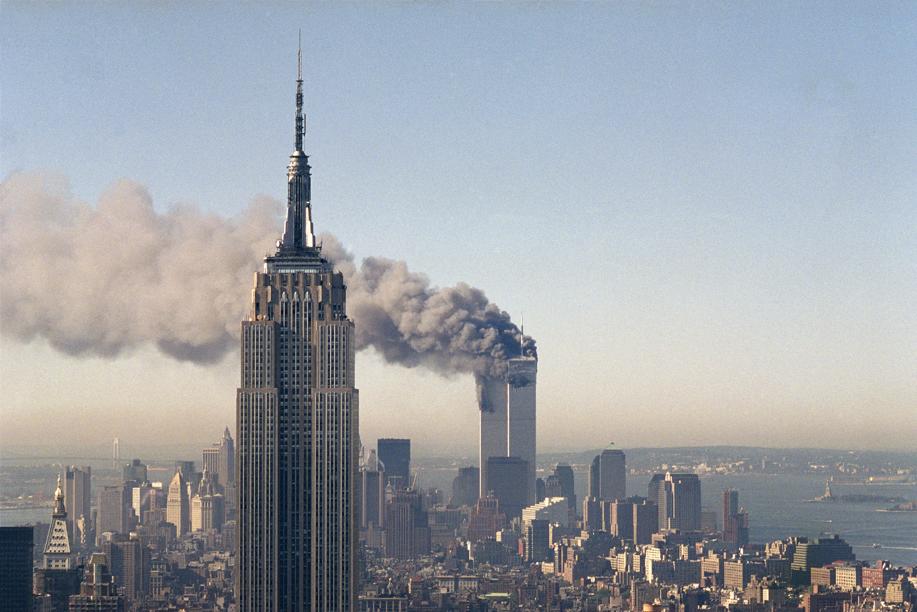
For my first summer job, I was a groundskeeper at Croton Point, a peninsula that juts out into the Hudson River. On clear days, if you gazed due south, you could spot the World Trade Center. Manhattan was 35 miles away; the tallest towers were the only visible part of the skyline. Distance blued them, softened their edges. And when the Sept. 11 attacks took place decades later, that image, both staunch and ghostly, haunted me along with all the other, incalculable hauntings.
Now we come to the 15th anniversary. I had a toddler in 2001, another baby the year after. They’re teenagers now, my son the same age I was that Croton Point summer. Each year now, we honor the day in some way, and for 2016 I’m giving them this great, vivid overview of the events: “The 9/11 Report: A Graphic Adaptation’’ (Hill and Wang, 2006) by Sid Jacobson and Ernie Colón. It’s based on the report of the National Commission on Terrorist Attacks Upon the United States. And comics legend Stan Lee himself blurbs it should be “required reading.’’
He’s right. There’s something about pairing the report’s devastatingly factual sentences with art. Like this, about the hijacked Flight 93: “About 9:59, Jarrah began to roll the plane to the left and to the right, then up and down, in an attempt to knock the passengers off balance.’’ Colón shows a dizzying superimposition of a plane in a half-dozen, off-kilter positions. Or this flashback to Khalid Sheikh Mohammad and his nephew Yousef: “As early as 1995, they began thinking of aircraft as weapons . . . ’’ with each chosen building (the Capitol, CIA headquarters, the World Trade Center, the White House) stamped with huge, red target sightings.
I felt ill, once again, at our lack of preparedness. Indeed, the report calls our various air defense agencies and systems “unsuited in every respect for what happened on 9/11.’’ It also offers good, brief context from Middle Eastern history. But the most full, most gripping back story is the Pulitzer Prize-winning “The Looming Tower: Al-Qaeda and the Road to 9/11’’ (Vintage, 2007). The title, chillingly, refers to the looming tower in the Koran (fourth sura). And reading Lawrence Wright’s masterpiece today, in the wake of ISIS and the Syrian refugee crisis, adds even more dread and gravitas.
We follow Muslim Brotherhood leader Sayyid Qutb, as he studies in the United States in the 1950s, coming to believe that “Islam and modernity were completely incompatible.’’ We learn that Al-Qaeda decided to scotch the 9/11 attacks because they couldn’t find members westernized enough to pull it off — until Mohammed Atta and three other English speakers presented themselves. Then there’s John O’Neill, the intense, single-minded FBI agent (with quite the hidden life) who tried to sound the alarm about Osama bin Laden: “The Man Who Knew,’’ was the title of a PBS documentary about him. O’Neill was last seen on the 49th floor of the north tower, overseeing its evacuation.
And so to “102 Minutes: The Unforgettable Story of the Fight to Survive Inside the Twin Towers’’ (Times, 2005) by New York Times reporters Jim Dwyer and Kevin Flynn. I found myself checking the index for stories I remembered — like that of window washer Jan Demczur, who helped free five people stuck in an elevator by laboriously cutting through drywall with the blade from his squeegee. Another story made my heart race: Stanley Praimnath of Mizuho Capital Markets/Fuji Bank on the 81st floor actually spied the second plane before it hit, its wing stopping 20 feet from his desk: “He could see the red and blue marking and the letter U as it approached.’’
I’ve mentioned 9/11 books that pursue the overview, the before, and the during. This last goes after the after, zeroing in on Ground Zero and the incredible 24-7, nine-month effort to clear 1.5 million tons of wreckage — without the traditional use of dynamite, because it would harm human remains. Agency leaders gathered on tiny seats in a kindergarten classroom at nearby P.S. 89. Workers fought underground fires that lasted for months and every day risked their lives on the jagged, chemical-laced, shifting rubble pile.
“American Ground: Unbuilding the World Trade Center’’ (North Point, 2002) is by Atlantic correspondent William Langewiesche, and it is both fascinating and unflinching. Emotions were raw when this book first came out, because its short — but candid — report of looting by Ground Zero workers overshadowed everything else. All these years later, though, the courage and stamina shown by the construction workers, firefighters, engineers, coroners, and more now overshadow the flaws of the few. As Langewiesche writes in the 2011 afterword, Ground Zero demonstrated an American “culture of improvisational genius that seemed enormously encouraging about the future.’’ I’ll try to let that tower over my memories.
Katharine can be reached at katharine.whittemore @comcast.net.



